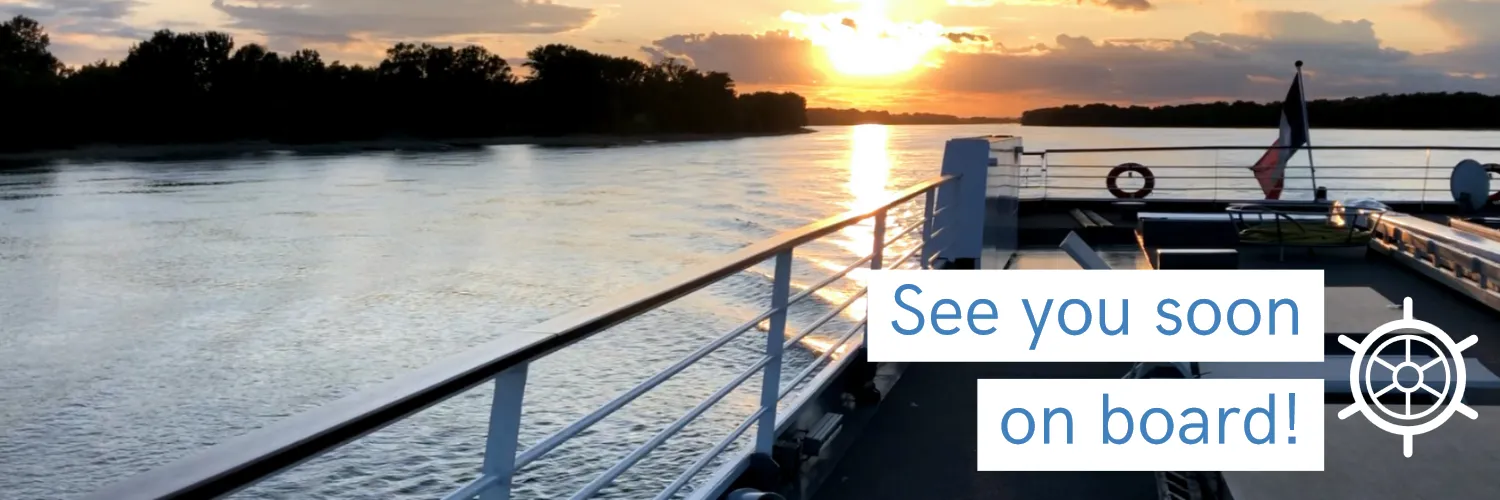- Home
Discover Europe on a Cruise along the Danube river
Focus: 8-Day Danube Cruise on board the MS Symphonie
Cruise from 24 September to 1 October 2019.
Reference WBB_PP : the pearls of the Austro-Hungarian Empire
-Day 1: The Danube and its Blue Waters-
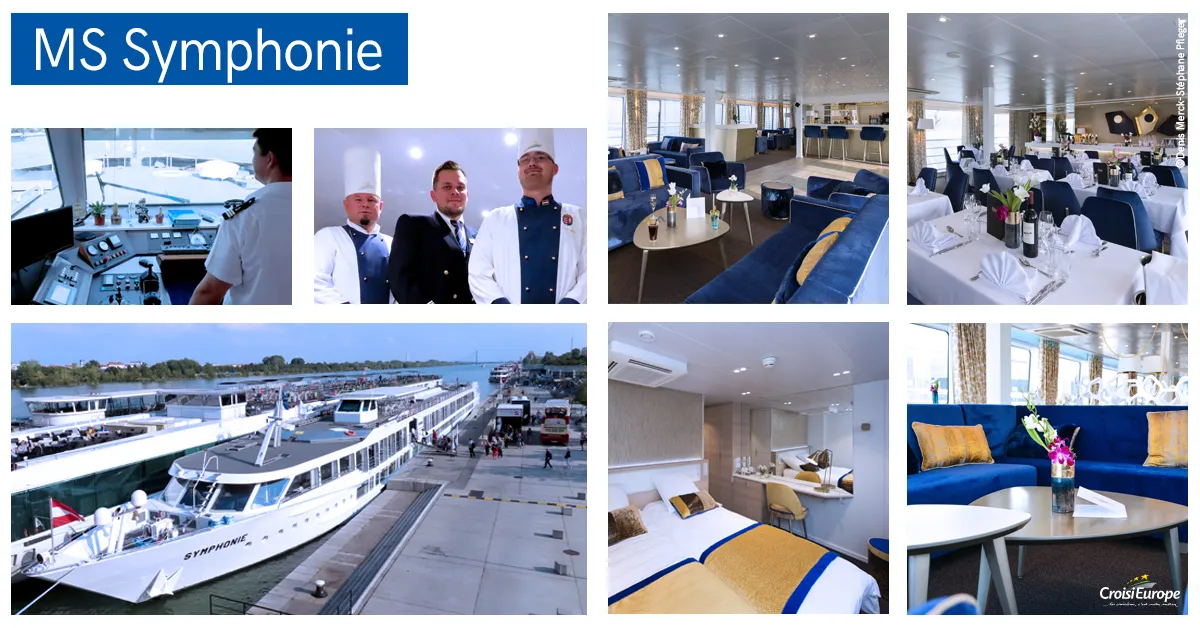
In the shadow of Vienna’s St. Francis of Assisi Church, a large crowd is busy embarking on board the beautiful white ship. On the enchanting waters of the Danube, the MS Symphonie is getting ready to welcome its new passengers for a 620 miles trip on the legendary river, promising a myriad of wonderful moments. There are 94 passengers, 10 different nationalities, welcomed on board by Julien and Alexia, the purser and the cruise leader.
From France, Quebec, Macedonia, Israel, Catalonia and Australia, couples, families and friends. There are those on their honeymoon, wedding anniversary, those on their first cruise, others for whom it is a way of life, a peaceful and romantic experience, ideal for getting away from it all. There are loyal customers, those who are ready to go and those who are coming back from their dream cruise. All of them are fond of culture and travel, looking forward to making new discoveries, meeting new people and sharing, all of them impatient to travel differently. The Great and Wise Danube is waiting for them.
Carole lives in Pau. She knows almost everything about this river, famous for its calm water. She finds it again like you find an old friend, with endless tenderness and pleasure. She has read the poems of Attila József and Hans Christian Andersen’s tales, as well as Jules Verne, Claudio Magris and François-René de Chateaubriand’s stories inspired by the Danube. They have all paid tribute to this long and silent witness to centuries of history, which meanders majestically through mountains, rich scenery, through 10 countries and 4 capitals.
The musician Johann Strauss Jr. entitled his famous Opus 314, a series of five waltzes which made history under the name “An der schönen blauen Donau”: The Blue Danube Waltz. The first worldwide music success of all times, played every year more than 300 000 times, it can be heard at the opera, as the soundtrack of “2001: A Space Odyssey”, the Mr. Bean Movie and Hitchcock’s classics.
Blue, yellow, grey, golden, everyone sees in the Danube the color of their own emotions. After the lively presentation of the crew on board, the fresh evening upon us, the MS Symphonie sets sail. She launches herself silently between the sky and the water, towards a myriad of emotions.
-Day 2: The Abbey of Melk and the treasures of the Danube-
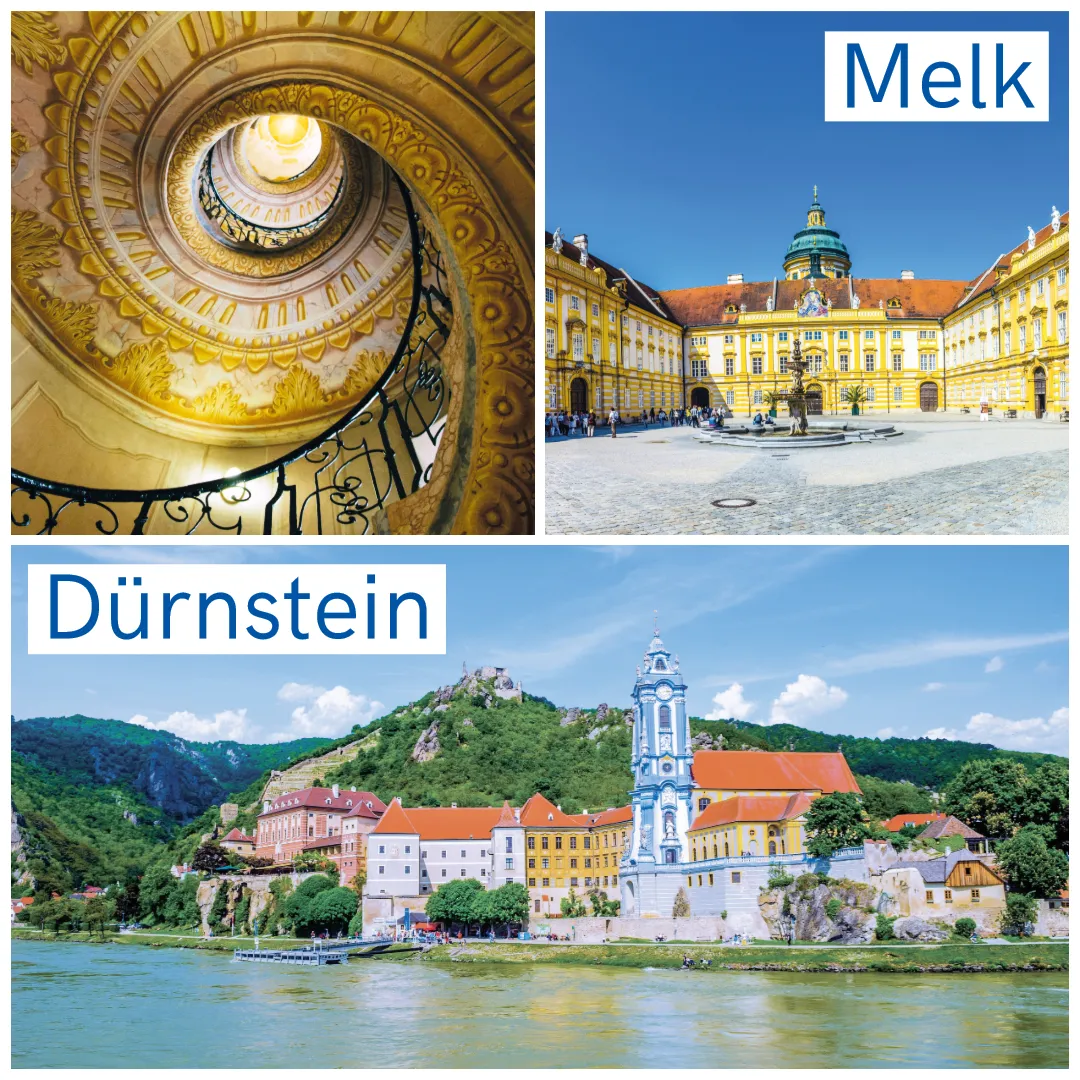
Formerly the House of Babenberg, Austria's first ruling dynasty, Melk Abbey is a Benedictine abbey overlooking the Danube River. It is the MS Symphonie’s first stopover. Two coaches await the passengers to take them to the heart of the spiritual and cultural center that has been alive for more than 1,000 years, an amazing baroque masterpiece, whose golden walls complement the green gardens, a mix of marble, precious wood and golden leaves. It is in this mesmerizing setting, where each step is an adventure, that Umberto Eco set the medieval thriller titled “The Name of the Rose”, with the young Adso of Melk as the narrator of the story.
The abbey’s coat of arms, two golden keys crossed on a blue background, welcomes visitors. It is a prelude to a fascinating voyage, from the Court of Prelates to The Garden of Paradise, through the wonderful church to the imposing library, which is one of the most beautiful in the world. Characterized by dark wood, delicate sculptures, and fine Marquetry, it is home to 100 000 books, precious ancient manuscripts, historic and encyclopedic publications, including a fragment of a copy of the Nibelungenlied.
Taking one last look at the abbey, we notice the remains of the medieval Dürnstein castle. This is where Richard the Lionheart was imprisoned when he came back from his third crusade. Legend has it that his loyal herald of arms, Blondel de Nesle, searched the Valley in an attempt to find him, singing a tune that they had composed together. It is when he heard the voice of the King singing back the chorus that he found him. One has to be in good shape to climb the steps to the remains of the fortress. Sasko and his wife Vera from Macedonia, were very pleased to have climbed it, as they managed to catch a glimpse of the wonderful view over the Valley. There is just one word to describe it: “amazing”.
Another option is to visit St Augustine's Abbey, a baroque jewel with its blue bell, to purchase an apricot drink - a local specialty - or to stroll the cobbled streets through the village. A plaque indicates that this is where, in 1805, Napoleon’s soldiers resisted the Russian troops, even though they were “outnumbered four to one”. The Symphonie is now leaving the Wachau Valley. It is gliding peacefully, between vineyards and orchards on the banks. Just as in Hilaire-Léon Sazerac’s poem, the landscape offers an endless series of breathtaking and contrasting views.
-Day 3: Bratislava, the capital of Slovakia-
On board the Symphonie, Julien is always the last to go to sleep and the first up. Nothing predestined this friendly and multilingual thirtysomething from Alsace, former IT developer, to become purser. “Seven years ago, I applied to a CroisiEurope job offer, kind of by chance. I started off as a cruise leader. Then I followed internal training programs, and worked my way up.” Today he boasts 3 pips and a crisp white shirt, smiling and always ready to help the passengers and answer their queries. “I love working in contact with people. A river cruise is always a fantastic human adventure.” It is also for him an impressive operation to oversee alongside the captain of the ship, and requires great attention to detail to make sure the trip runs as smoothly as possible.
This morning, Julien met his counterpart on the MS Modigliani, docked alongside the MS Symphonie under Bratislava’s New Bridge (Novy Most), also known as the UFO Bridge. This is the nickname given to the flying saucer-shaped panoramic bar-restaurant perched atop the bridge's 278 ft. pylon. Bratislava Castle, the great white castle in the shape of an upside down table depicted on Slovakia’s euro coins, and the Novy Most bridge built in 1972 under the communist regime, have come to symbolize the city formerly known as Presbourg, today's Bratislava. The Slovakian capital was also among the shortlisted finalists competing for the “European Capital of Smart Tourism 2020” title.
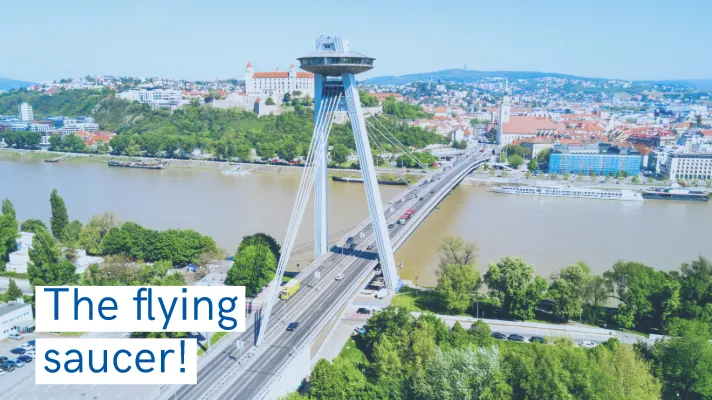
Jana, our guide, reminds us that a number of kings were crowned in this lively city, between the banks of the Danube and the Little Carpathians. She fondly tells us all about multiple facets of Bratislava, its cobbled streets and shaded courtyards, its pastel façades, cathedrals and palaces. She also introduces passengers to local foods: “Bryndza”, the national dish served with sheep milk cheese as the main ingredient, and the famous “Rožky”, Slovak bread rolls. She also sheds light on two famous residents: Schöner Náci and Cumil. These two figures are actually statues, beloved local institutions, and the most photographed monuments in Bratislava. Legend has it that touching Cumil’s head will make your wish come true, as long as you keep the secret forever. Nobody knows, after all these years, how many wishes have been made.
The ship is continuing its journey. Sitting on the sloping banks, fishermen are waving at us. Then, after the spectacular Gabčíkovo–Nagymaros Dams, the sun is gradually going down. On the deck, standing in the gentle breeze, passengers are enjoying this peaceful moment. It seems like time has stopped. The night has fallen. It feels like the Danube is theirs.
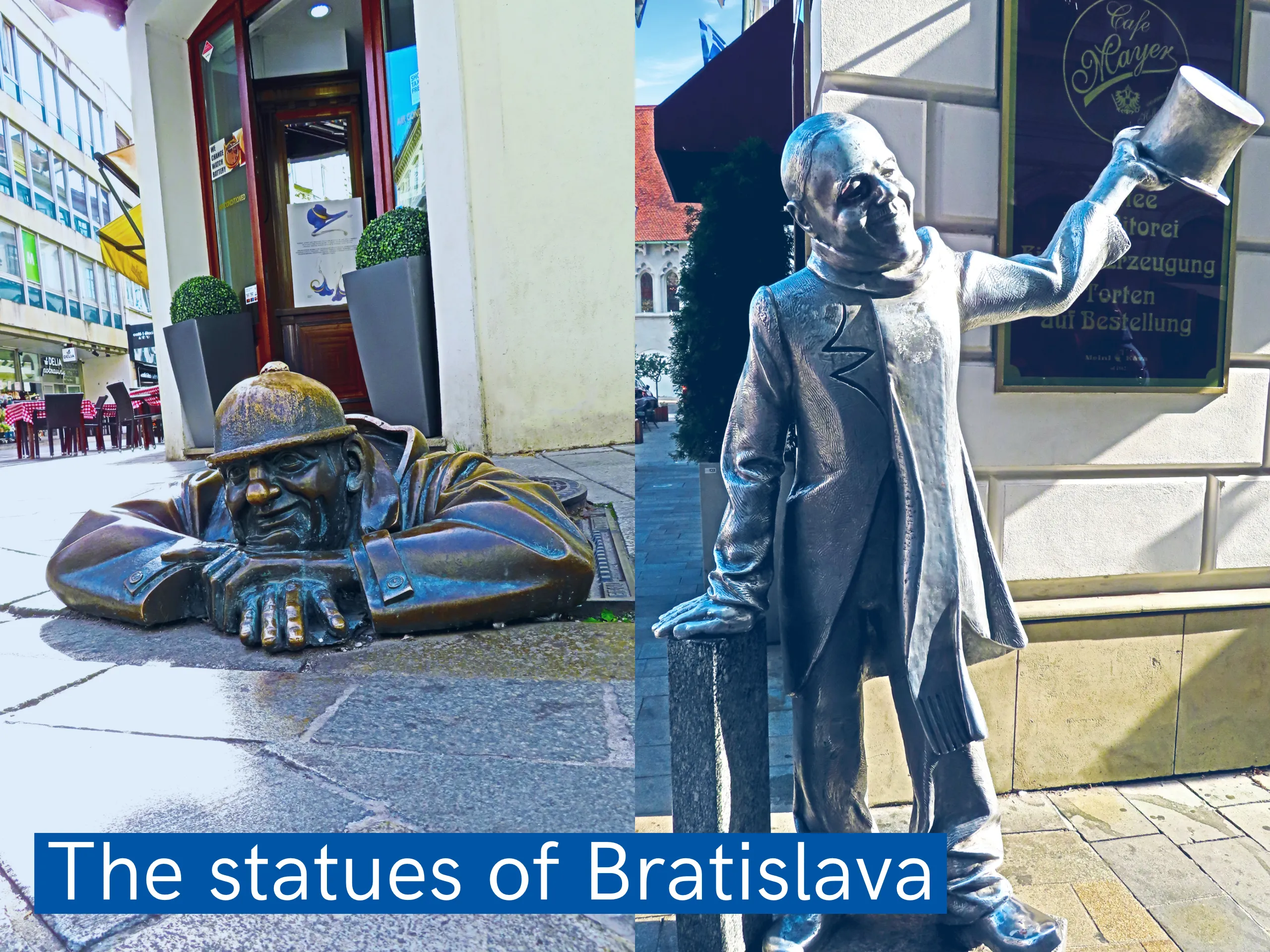
-Day 4: Discovering the Pannonian steppe in Hungary-
With his catogan, glasses and little straw hat, Raphaël Szabo has kept his student look. With his Norman roots, and 11 years spent near the French city of Caen, this astute Hungarian guide welcomes passengers at the stopover of Kalocsa. “I enjoy sharing my country’s culture and traditions with people,” he explains to us full of pride, while the coach driver maneuvers carefully along a narrow strip of road dotted with trees. We are going to the farm of Puszta, where century-old traditions are preserved. It also homes a wide range of protected animals: half-breed horses, Hungarian Greys, sheep with spiral-shaped horns, common cranes, Mangalica pigs and donkeys. Visitors are greeted by the “Csikós”, Hungarian horse-herdsmen wearing their traditional outfit. Later, after tasting some “Pálinka”, a traditional fruit spirit made with apricots, and sampling some “Pogača”, a type of bread similar to focaccia, the Csikós give an extraordinary equestrian show.
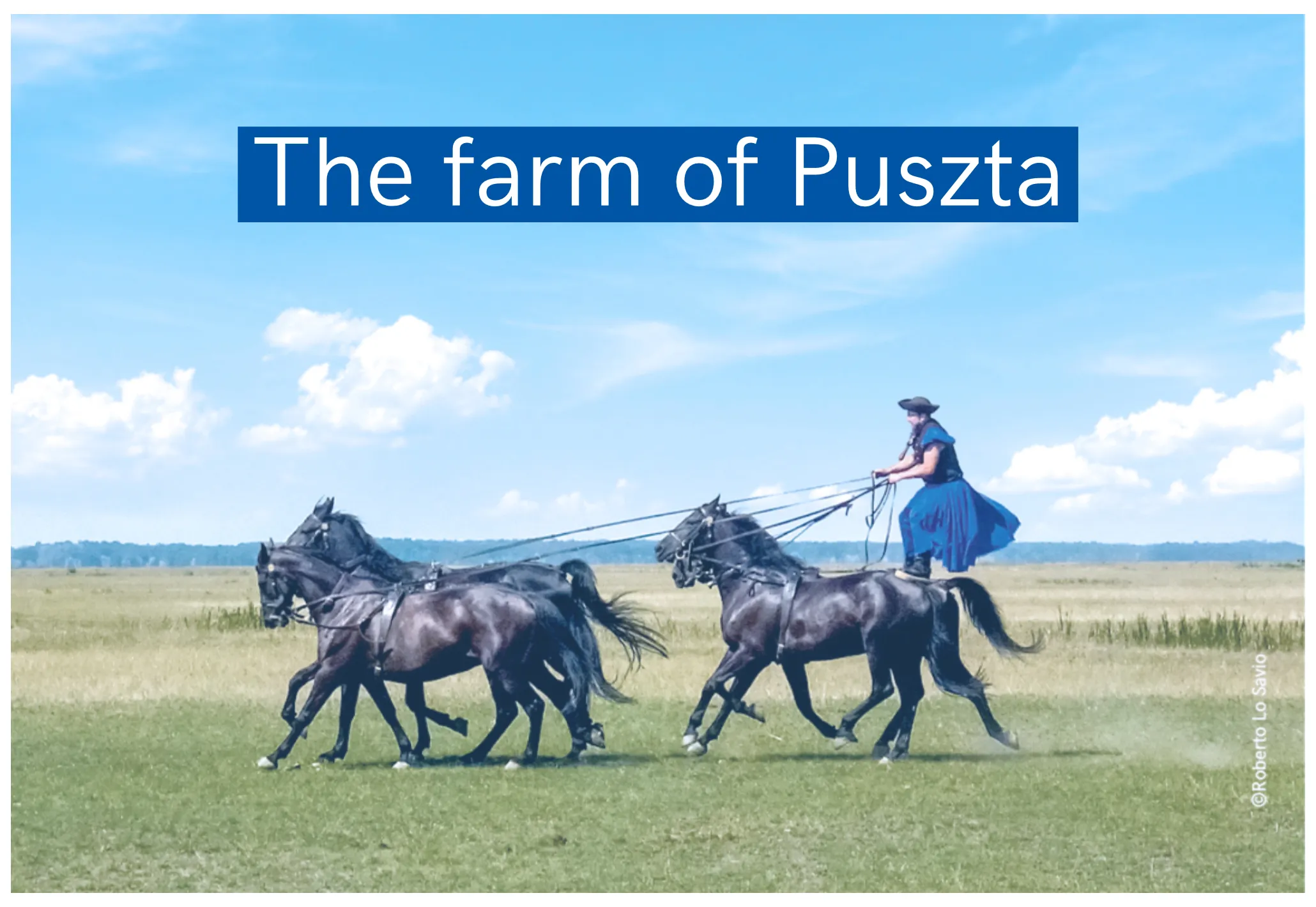
The next excursion takes passengers to the Paprika Museum of Kalocsa, dedicated to the traditions related to this spice. Originally imported by the occupying Ottomans, paprika is considered “the poor man’s pepper” in Hungary, making it the pride of the town. Locals store it on bright red strings of spices hung up to dry on the walls outside their houses. With a score of 8.5 out of 10 on the Scoville scale measuring the spiciness of peppers, Kalocsa’s paprika used to serve as medicine during great epidemics, but also as a means of payment, in the middle of the 19th Century. Nowadays, it is Hungary's favorite spice. Locals even consume it at breakfast, and it can also found in jam preparation, biscuits and even chocolate.
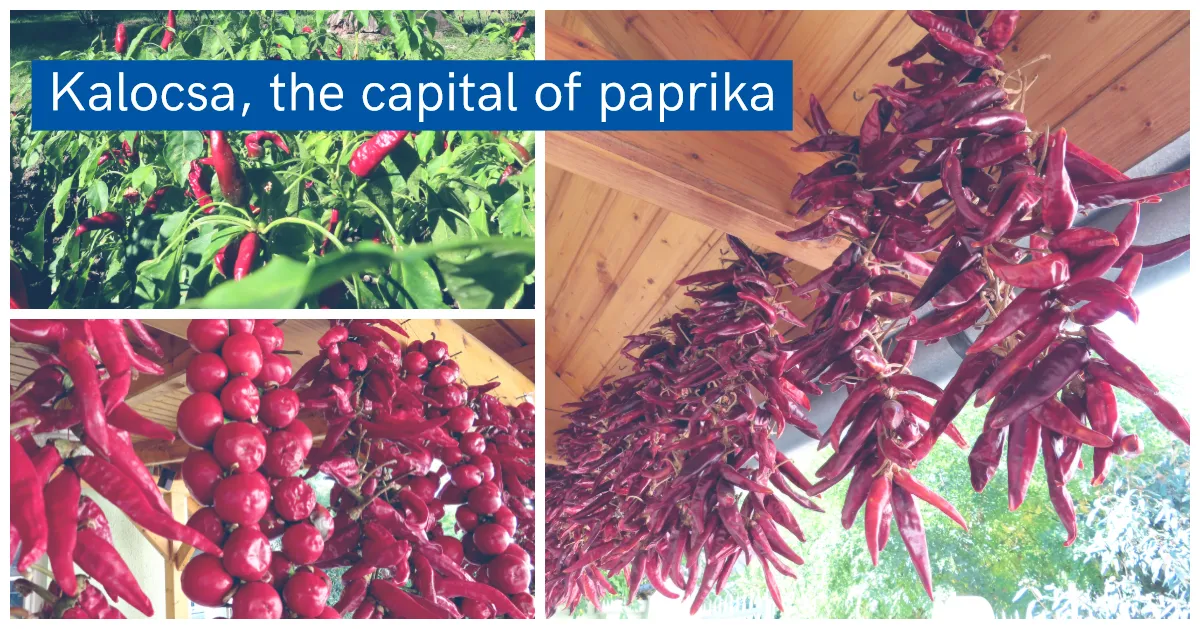
This tour ends under the gaze of the Statue of Delibaba, the patron saint of embroiderers. At Kalocsa’s Folk Art House, Raphaël reminds us of Hungary's great embroidery tradition, recorded on the UNESCO list of Intangible Cultural Heritage. Our guide ends his fascinating tour with music, singing a Transylvanian number accompanied by his “Brácsa”, a traditional 3-string instrument.
On board our ship, Alexia, our cruise leader takes over. Tonight, in the salon-bar, everybody is enjoying the beginning of the evening. Joszef is playing jazz tunes on the piano. The Symphonie is gliding on the river upstream, all the way to Budapest.
-Day 5: the different faces of Budapest-

For a long time, boats were the only way to reach Buda and Pest, separated by the Danube. Given the perilous nature of the crossing, especially in the winter, the Count of Széchenyi decided, in the middle of the 19th century to build a solid bridge. Under the lead of the Scottish engineer Adam Clark, the project led to the construction of the Chain Bridge, opened in 1849. Guarded by two giant lions on either side, this majestic suspended construction, representing the perfect fusion between steel and stone, has come to symbolize Budapest. “The Pearl of the Danube” has six other bridges, including the Margaret Bridge (designed by French engineer Ernest Goüin), and the Liberty Bridge, whose beams are decorated with large bronze statues of the Turul, a falcon-like bird. You may be tempted to pay a visit to these historic bridges during your free time in Budapest.
Peter has done just that. He is from a town in Kansas, and decided to join this cruise to explore his Hungarian Magyar roots. He tells me how mesmerizing this Danube cruise is for him, and the emotional journey his has undertaken: “My father was kicked out of Hungary by the Soviet occupier, after the 1956 Revolution. He went to the United States for a better life and never came back to his country.” That’s why Peter made the decision to return to a vibrant and generous city, where all the wonders of the world seem to be gathered in one place, and whose heart never stops beating, from dawn to sunset.
As early as 6 o’clock in the morning, Budapest’s Great Market Hall opens. Its stone walls, ceramic roof and central clock are reminiscent of a train station. The multitude of stalls transports visitors on a sensory trip: honey, Matryoshka dolls, Tokaj wine and knick-knacks all make for a new world. In another part of the city, the Gellért Baths are ideal to unwind. Now part of the famous Hotel Gellért in Buda, references to the spa's healing waters have been found from as early as the 13th century. Inherited from the Romans, maintained during the Ottoman occupation, and developed under the Austro-Hungarian empire, the Gellert Baths and Spa are a Hungarian institution. The current spa was founded in 1918, and a visit to the Art Nouveau thermal baths is a beautiful and historical experience.
Peter is fully enjoying the stopover in Budapest. He tells me how he went all the way to the top of the highly perched Buda Castle, on the hills of Buda by crossing the Elizabeth Bridge, up to the Castle quarter, from where he enjoyed a fantastic panoramic view of the city. Also, a walk round the castle quarter and on to the Fisherman's Bastion, built in neo-Roman style in 1902, offered the simple pleasure of a panoramic view over the city and the Danube. He also visited the peaceful gardens of Margaret Island, and souvenir shops on the long Váci street, one of the main pedestrian thoroughfares and perhaps the most famous street of central Budapest. Peter also mentions his stroll on Heroes' Square, one of the major squares in Budapest located near the Parliament, for which more than 88.18 lb of gold were used to decorate the 691 rooms, 233 statues and 12.4 miles stairs of this sumptuous building. The Café Gerbeaud is also well worth a visit, for its traditional decor including its rococo ceiling.
Budapest takes on a fairytale dimension when night falls. The illuminated Parliament, with the banks of the Danube reflecting in the water, makes this city magical. On the deck of the Symphonie, Peter and all the other passengers relish this special moment, which
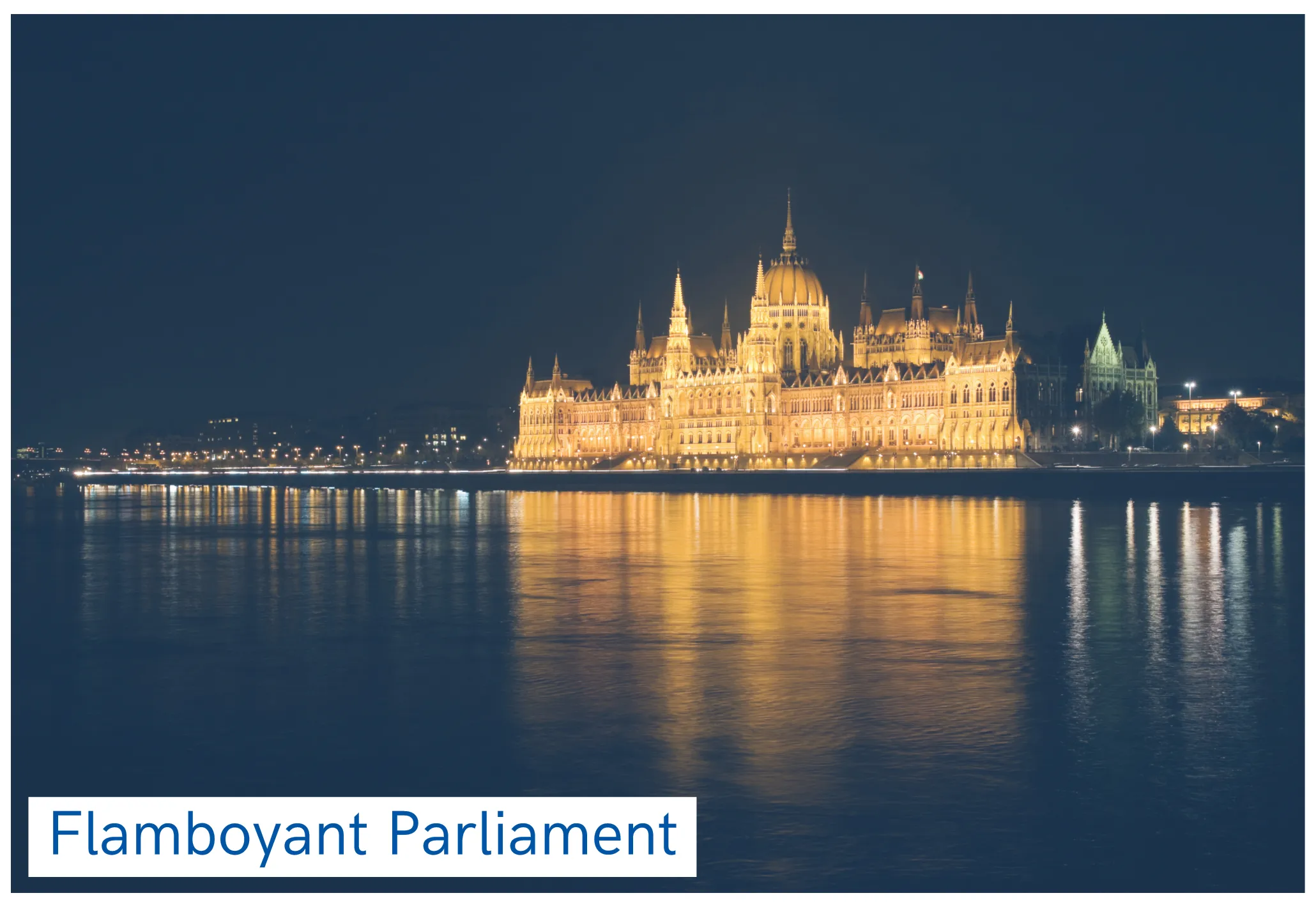
-Day 6: Esztergom: the Rome of Hungary-
A little train is picking up the passengers from the pier, taking them over the Mária Valéria bridge across the River Danube, joining Esztergom in Hungary and Štúrovo in Slovakia. After years of inflexibility between neighbouring communist countries, in 2001 the bridge was rebuilt for the second time since it was first opened in 1895. The abolition of border controls on the bridge makes it possible for joggers, tourists, and merchants to move freely at any time of day.
Esztergom Basilica is among the most important sites in the area. Taller than the Panthéon in Paris, this imposing majestic construction is located on the banks of the Danube. Unmissable from both sites of the river, its semi-spherical dome adorned by two clock towers make it an awe-inspiring landmark.
A tour of Esztergom Basilica is a must. A Latin inscription “Caput Mater Et Magistra Ecclesiarum Hungarie” (which can be translated as “The head, the mother and the master of the churches of Hungary”) is a reminder of the status of the construction in Hungary’s religious heritage. The sculptures, frescoes, and stained glass set this enchanting monument apart. In 1856, for the consecration ceremony, the classical music composer Franz Liszt played his “Missa Solemnis” there, an amazing piece of music played in the heart of an amazing backdrop. It is also in Esztergom that Saint Stephen I, King of the Hungarians, was born. The Castle Hill is where a 39.37 ft high statue commemorating his coronation stands.
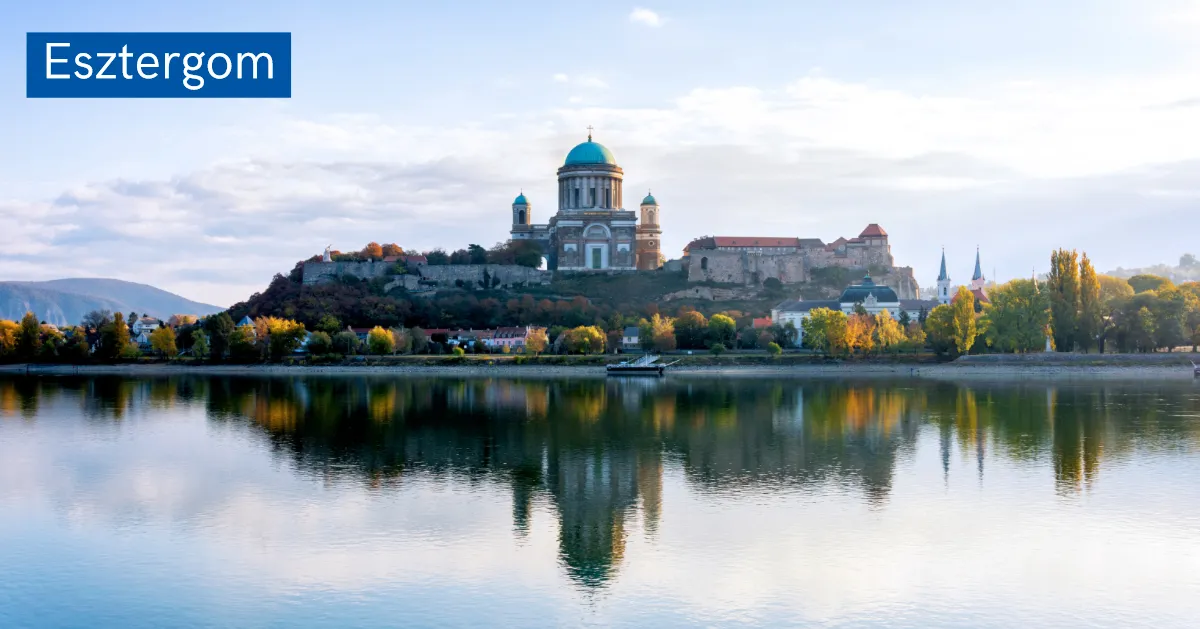
Back on board the Symphonie, passengers are delighted with their tour of Esztergom, Hungary's equivalent to Rome. The ship is now sailing to Vienna, while on the sundeck passengers play Mölkky, a Finnish throwing game, for which Jacqueline seems to win every round. Meanwhile, Laszlo Kanavor the jovial head chef on board, is working away in the kitchen with his team, bringing the final touches to the evening’s gala dinner. On the menu tonight: Dubarry cauliflower soup, Millefeuille of duck foie gras and Bayonne ham, crisp veal parceled with green cabbage served with Port sauce, plate of Reblochon cheese, and last but not least, Baked Alaska for dessert. It is an ode to French cuisine passengers enjoy today, and that the on board kitchen team have the pleasure to prepare: Laszlo shares with us his passion for food and great admiration for Paul Bocuse.
With the help of his young cook Attila, and his dedicated team, Laszlo is sending out the fine plates with the greatest of devotion, while the diners are relishing each course. It is with an enthusiastic round of applause that passengers congratulate newlyweds Alicia and Victor on their honeymoon. Another round of applause is for Nurit and Michael from Israel, cruising the Danube for their 60th wedding anniversary. The kitchen team comes out to greet passengers while they are enjoying their dessert, a much appreciated touch for Nicole: “The remarkable friendliness and personal touches of the staff on board are fantastic!”.
Alexia and the rest of the crew put together an entertaining gala evening show, revisiting the cinema classics, rounding up this feast with laughter and cheers with delighted passengers. This Gala evening on the Danube continued with passengers joining the dancefloor until the end of the night.
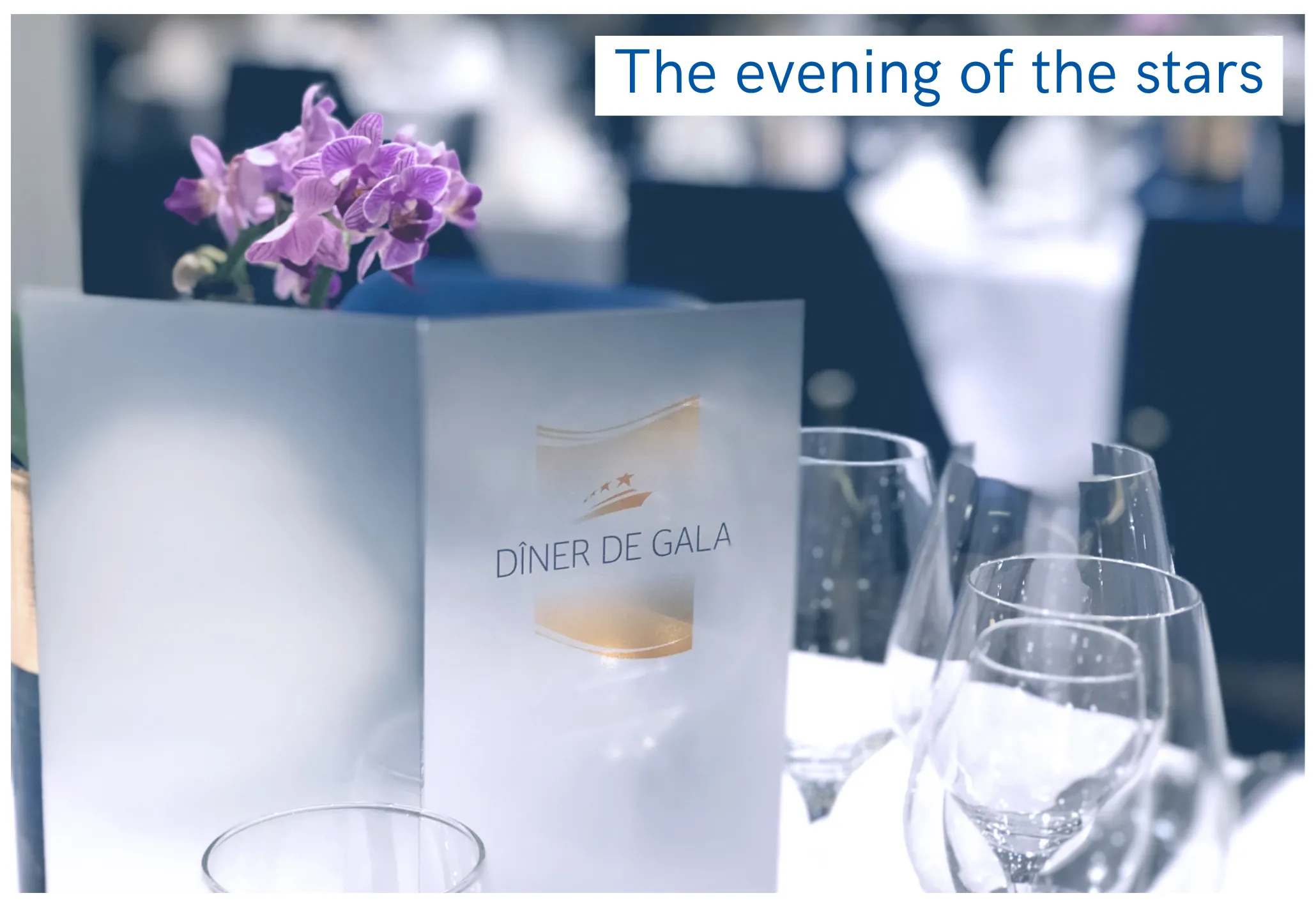
-Day 7 : Viennese traditions, between history and patisserie-
On board the coach taking us to Vienna, Doris tells us all about the many attractions of the Austrian capital, a multiple holder of the title of “world's greatest city”, with good quality of life. She proudly reminds us that this is where some of the most renowned and highly gifted virtuosos once lived, including Mozart, Beethoven, Schubert, Brahms and, of course, Strauss, earning the city an international cultural reputation. Bubbling with intellectual and artistic energy, Vienna reached its zenith at the turn of the 19th and 20th centuries, inspiring or revealing famous personalities: the writer Stefan Zweig, the composer and conductor Gustav Mahler, the founder of psychoanalysis Sigmund Freud, and the painter Gustav Klimt.
Our guide for the day invites passengers to enjoy a tasty break at a traditional Viennese café, where all the cakes look as good as they taste. The “Café Imperial Wien” is a listed coffeehouse, Café Korb tends to attract writers, whereas Marlene Dietrich, Paul McCartney and Hilary Clinton used to visit the Café Landtmann. The Café Sacher was named after the young pastry chef-confectioner apprentice at Prince Metternich’s court. In 1832, Franz Sacher created a special dessert, made up of a chocolate sponge, a layer of apricot jam and a splash of rum. Never would he have imagined that his “Sachertorte” would turn out to be one of the world’s most famous cakes.
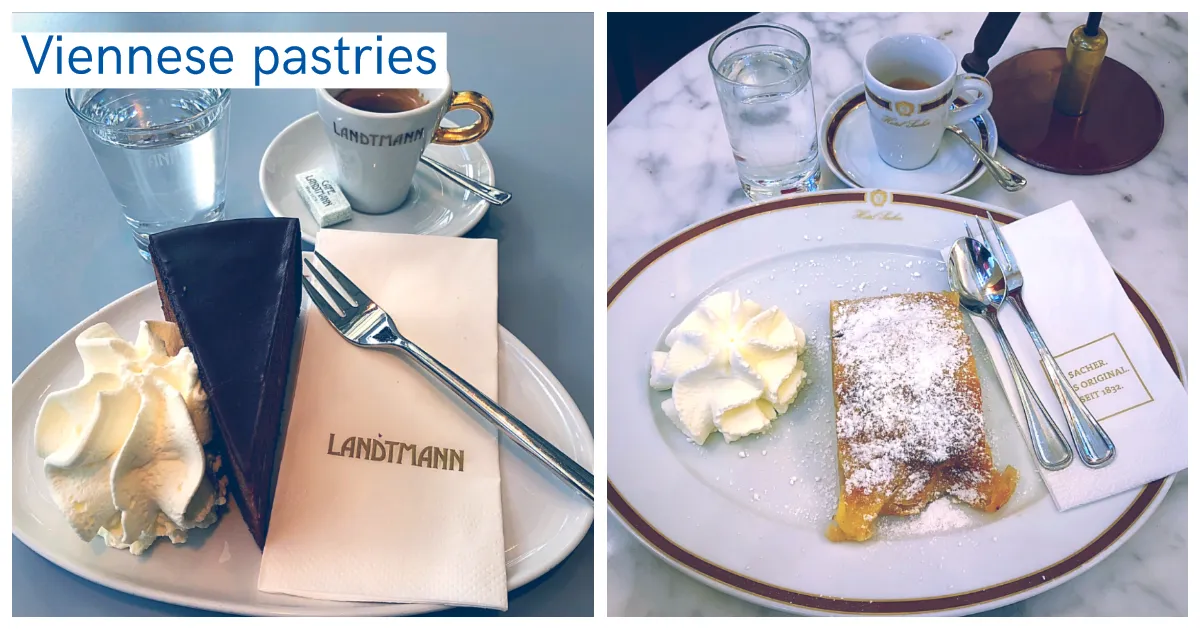
Away from the hustle and bustle of the city, let’s discover one of the most beautiful buildings in Europe. The opulent and romantic Schönbrunn Palace tells the story of an empire and its glory, its splendour and its downfall. In this Austrian version of the Palace of Versailles, the 6-year old Mozart composed his first piece of music, and played with the future Marie-Antoinette under the arches of the Gloriette. In the immense Mirror Room, Sissi admired herself, while elegant ladies and charming officers enjoyed their waltzes in the Grand Hall.
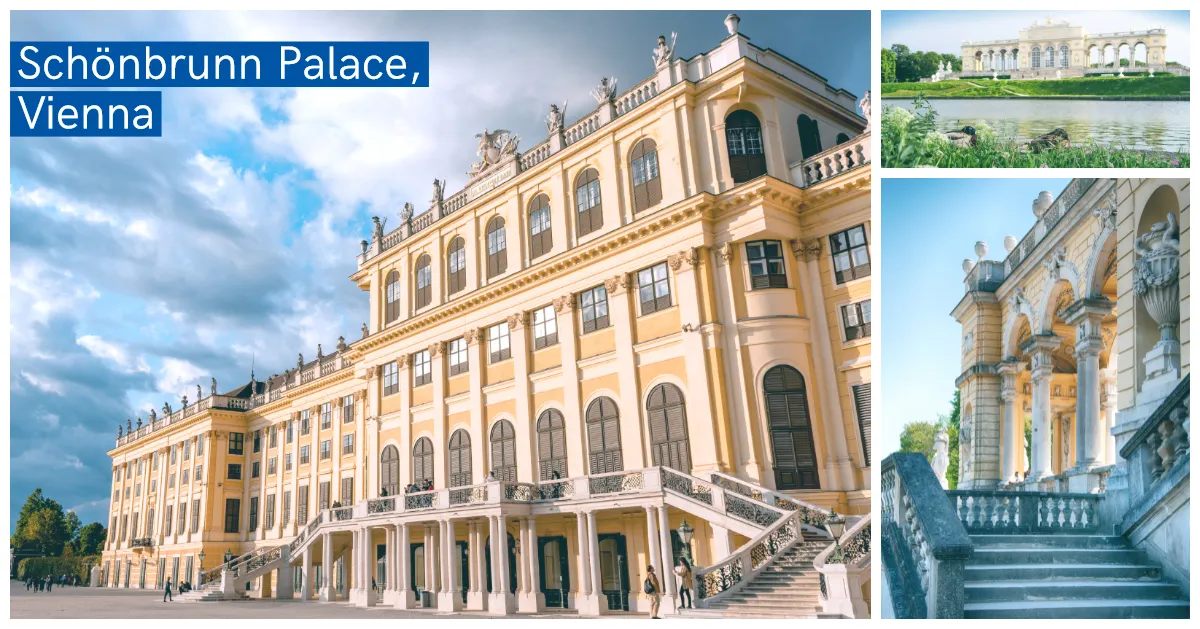
The summer residence of the Habsburgs used be Schönbrunn Palace, while the winter residence used to be Hofburg Imperial Palace. Hofburg is a city within a city. Today a monumental Palace, it was extended over time by a succession of Heads of state, starting with Ottokar II of Bohemia in the 14th century. Hofburg houses official state rooms, museums, the Austrian National Library and Spanish riding school, the Augustinian Church,among other things, the complex encompassing 18 groups of buildings. From medieval fortification to historical palace, Hofburg is located in the centre of Vienna and remains one of the city’s largest and most unique locations, where we can almost hear the sounds of waltzes and cannons, in a backdrop of artistic masterpieces and horse-drawn carriages.
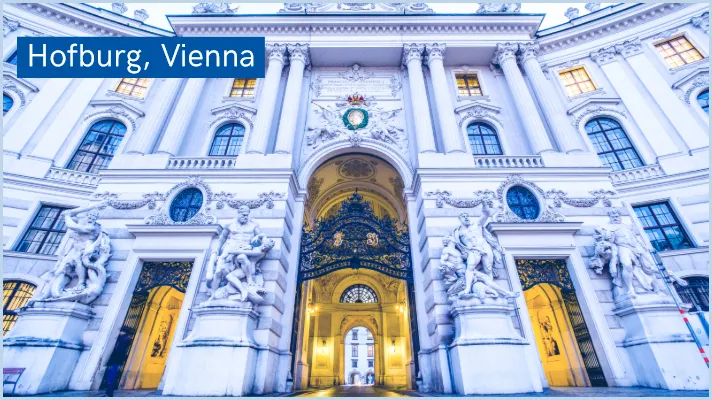
It is possible to visit the private apartments of Empress Sissi and Emperor Franz Joseph. Elisabeth of Bavaria was born into the royal Bavarian House of Wittelsbach, and was Franz Joseph I of Austria’s spouse. She was thus also Empress of Austria and Queen of Hungary by marriage, and was also known as “Sissi”. As depicted in the eponymous films, she remains one of the most romantic figures in history. A museum dedicated to her showcases her wonderful dresses to the public. It also tells her story, made up of solitary episodes and an obsession with her looks. Sissi was an Empress in love with freedom, clever and tormented, living a life she had not chosen.

-Day 8: the end of an exhilarating adventure-
The music of the delightful Viennese concert from the previous evening is still swirling in everybody’s head. The passengers of the Symphonie awake to a cobalt sky, the ship laden with tremendous memories, ready for a new adventure. The time has come to say goodbye full of emotions. Passengers sign the guest book, exchange goodbyes and sometimes their address. John Newton, an English journalist specialized in cruises tells us: “this was my third cruise with CroisiEurope, and once again, I loved it. Everything was great: the atmosphere on board, the pace, the itinerary, the excursions, the right balance between culture and relaxing. Not to mention a touch of class: excellent food!
Nurit and Michael will never forget the wonderful time they had on their Danube cruise, including Julien, Alexia, Laszlo, Zuzanna, Peter, Joszef, Kitti and all the others, their warm welcome and the attention they received. “Beyond the wonders admired all along our trip, there is something else that we very much appreciated: the human element. We had been on a cruise before, but it was on board a huge ship with thousands of passengers. This time on board the MS Symphonie, we felt good, as if part of a family: here, everybody counts.”
Written by Thierry HUBAC
Discover all our Danube cruises
